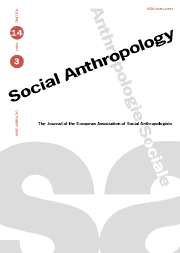Article contents
Anthropology 101
Barnard, A. 2000. Social anthropology. A concise introduction for students. Taunton: Studymates. 160 pp. Pb.: £9.99. ISBN: 1 84285 000 8. Monaghan, J., and P. Just. 2000. Social and cultural anthropology. A very short introduction. Oxford: Oxford University Press. 156pp. Pb.: £5.99. ISBN: 0 19 285346 5. Kottak, C. P. 2000. Anthropology. The exploration of human diversity, 8th edition. Boston: McGraw Hill. xxvii + 694pp. Hb.: £33.95. ISBN: 0 07 229852 9.
Published online by Cambridge University Press: 29 March 2004
Extract
Have you ever contemplated writing an introduction to anthropology, based either on your own teaching or on the things you wished you'd been taught? If not, you may not have noticed quite how many social anthropologists have already done so. They receive little critical attention – it is hard to spot a review of such books in the academic journals. Despite being a ubiquitous and influential anthropological genre, they gain more disdain than critical attention. They may have been avidly read as part of our first encounter with the discipline, but we are unlikely to have looked at one since, save to recommend them to potential new student recruits. Yet introductions and textbooks hold up a mirror to the disciplinary gaze and, read historically, reveal the changing wrinkles of anthropologists' self-perceptions. Under the guise of reviewing three recently published introductions and textbooks, I revisit some older ones to explore how the relationship between teacher and taught has changed over time. How do such texts conceptualise the discipline, their potential readers and students, and the learning process itself? How do they lay out their wares – glossy and welcoming, or scholarly and intense?
- Type
- Review Article
- Information
- Copyright
- © 2003 European Association of Social Anthropologists
- 1
- Cited by




